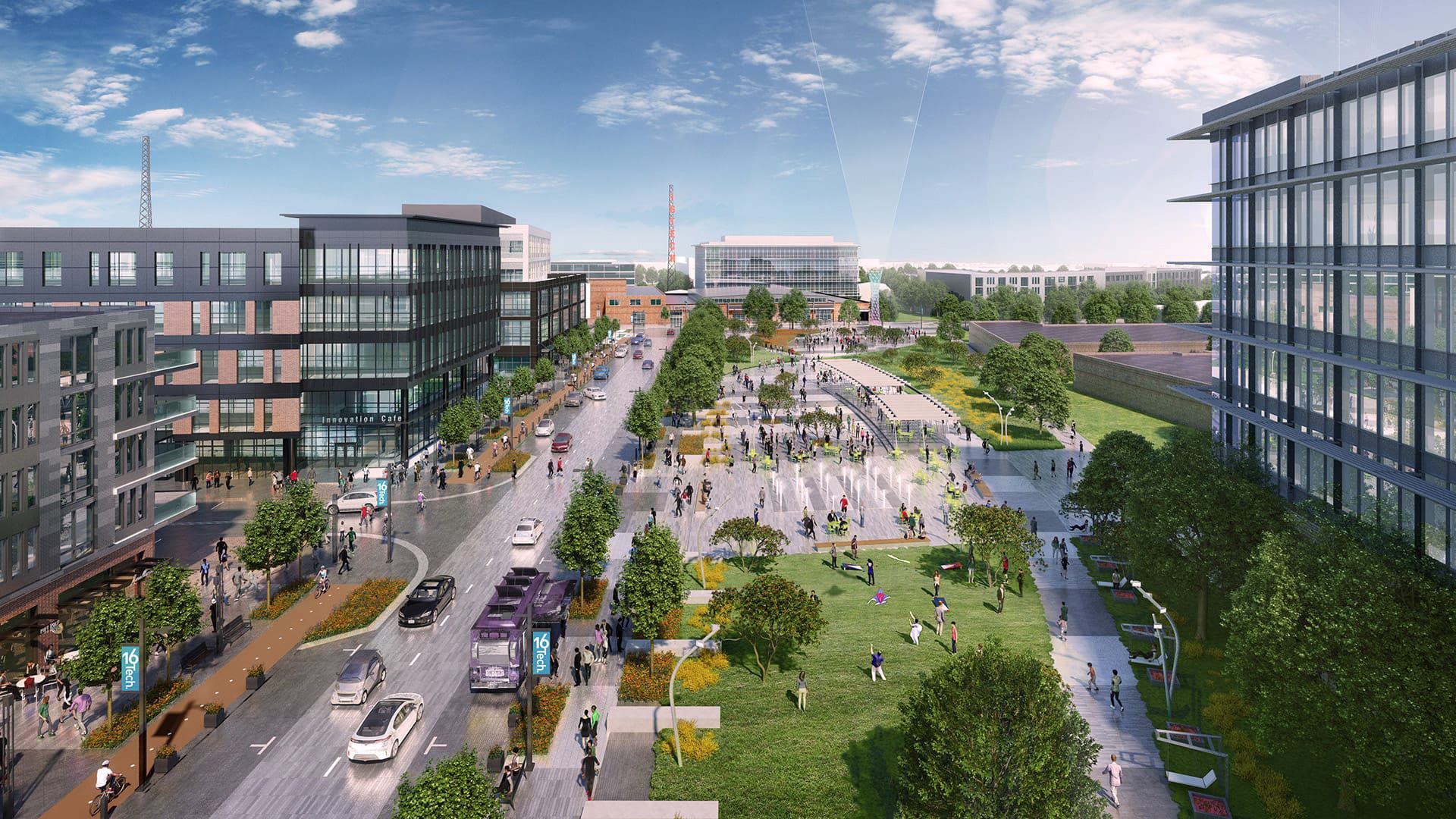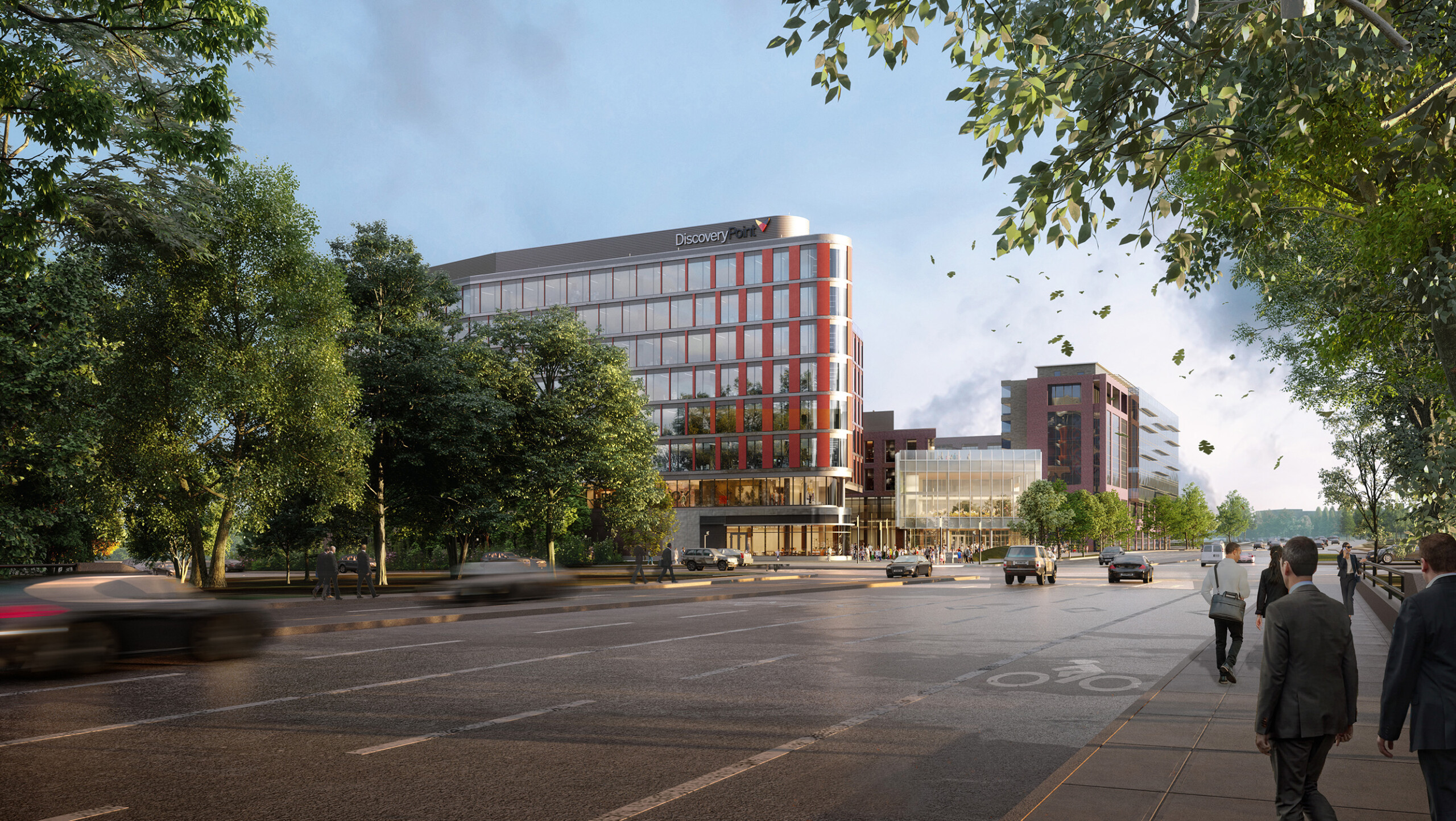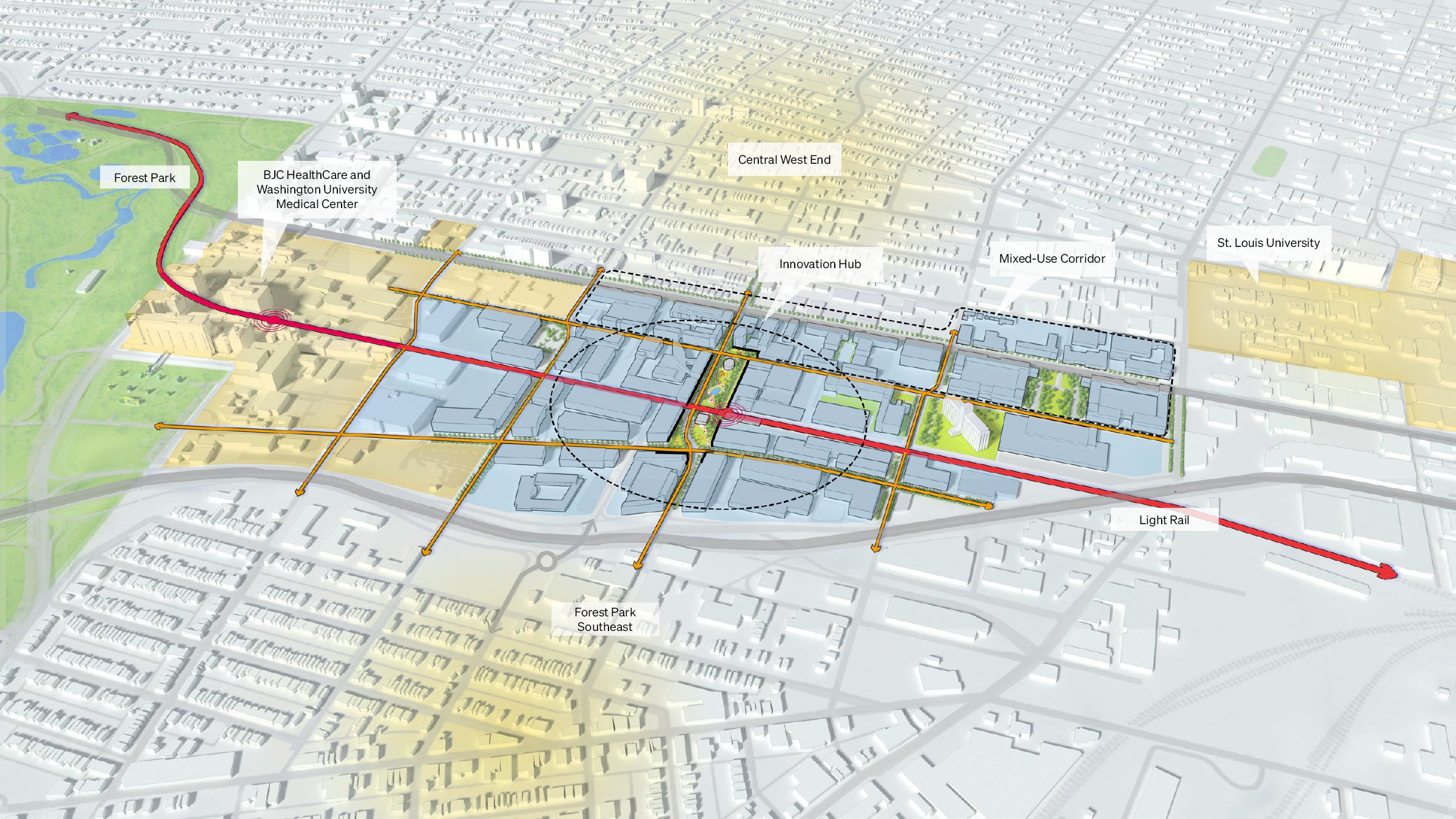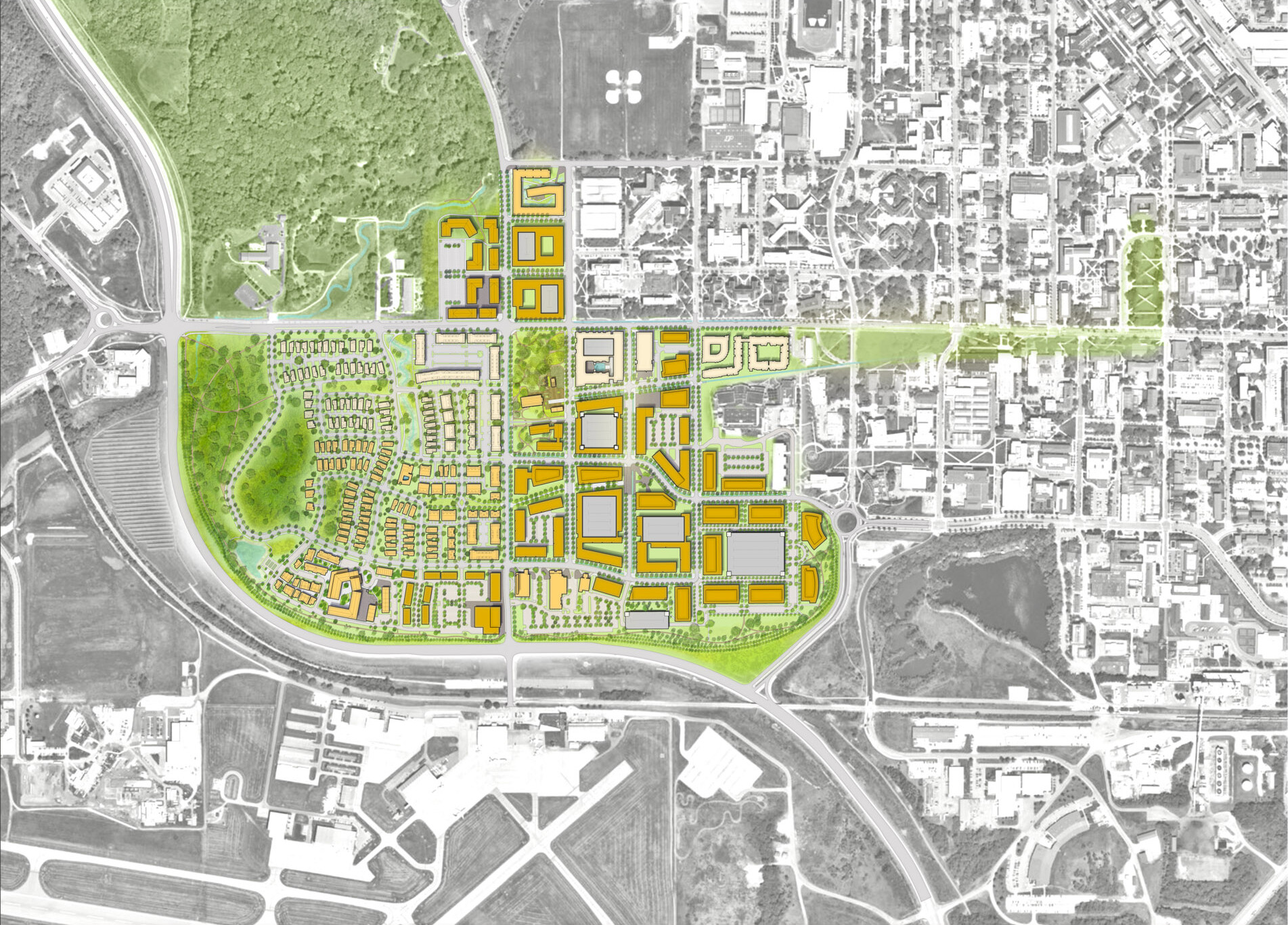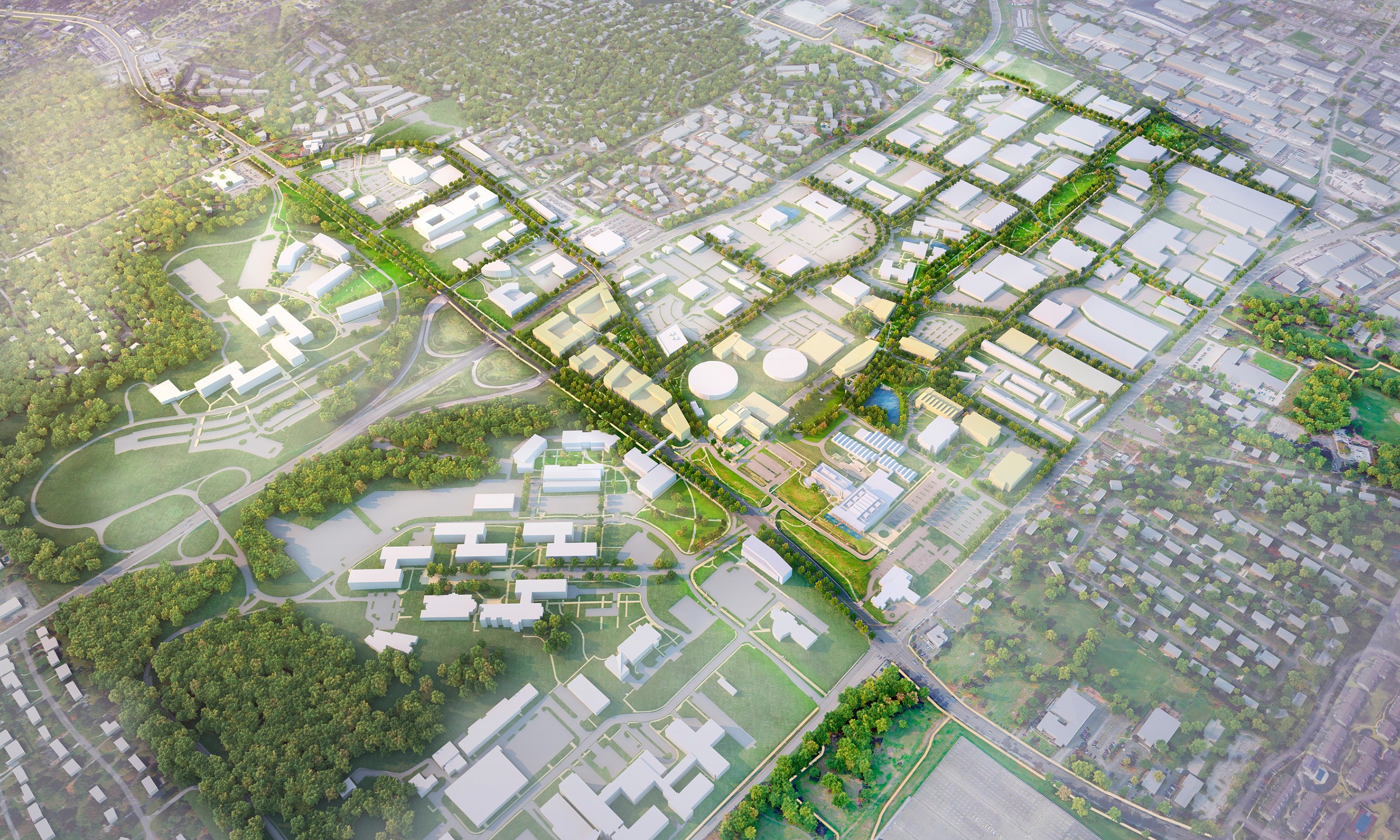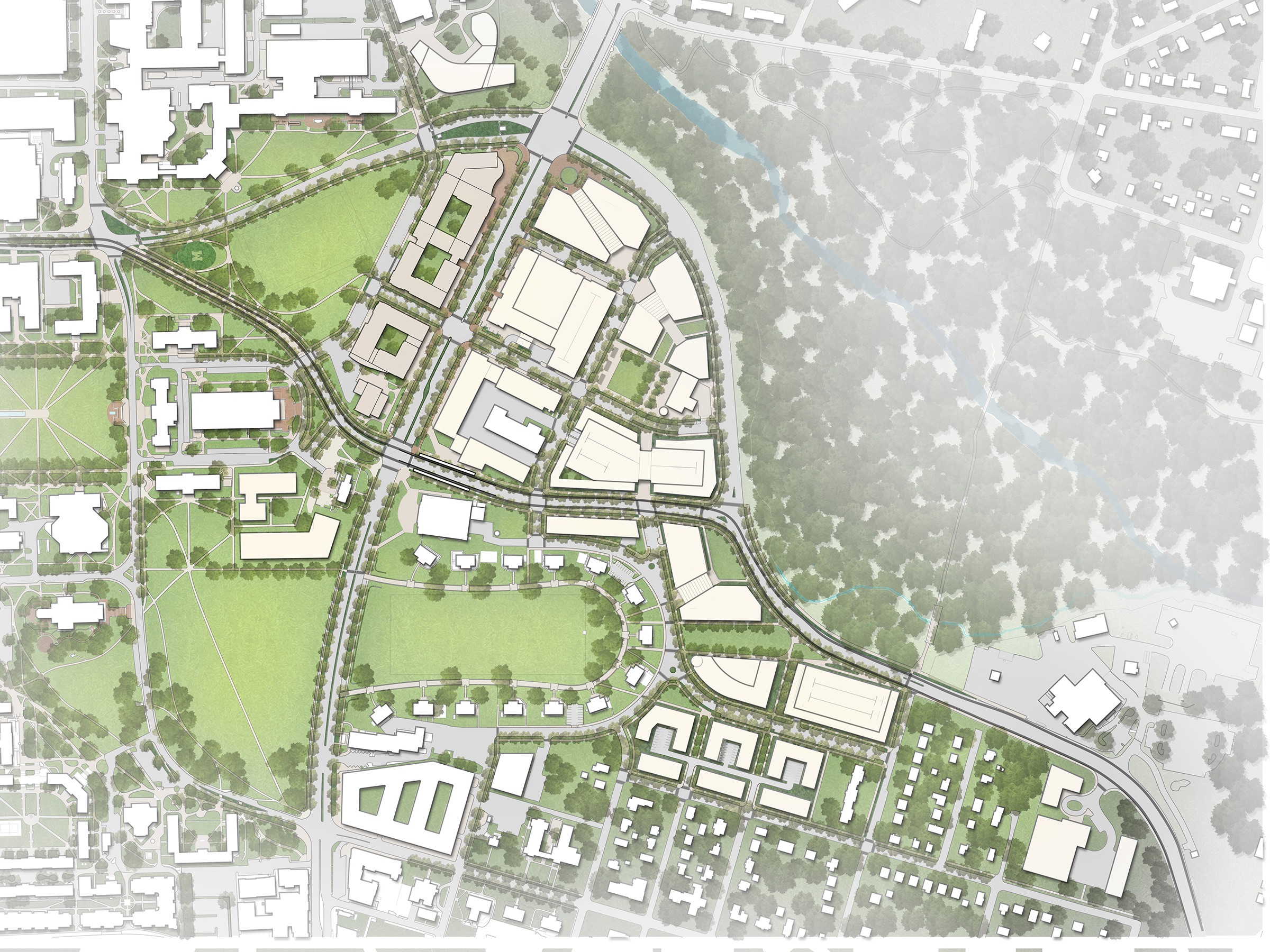Innovation Districts
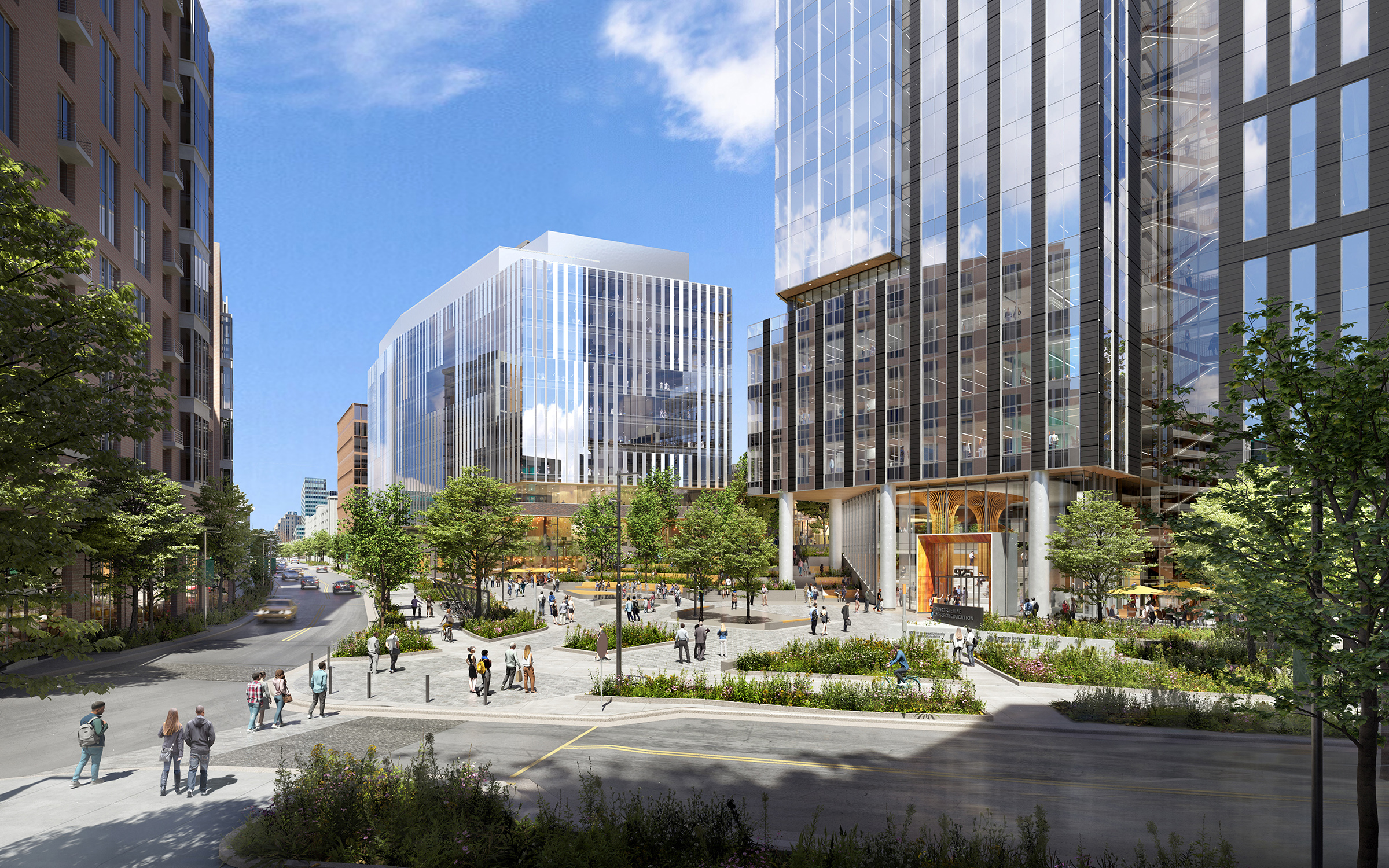
Innovation districts are dynamic, mixed-use environments where people live, work, and learn. Situated near anchor institutions or downtown areas, they have the power to invigorate local communities, enhance research and development, and ignite creative interactions.
These dense, mixed-use environments combine lab spaces, makerspaces, co-working spaces, incubators, and collaborative office space with housing, hotels, restaurants, retail, entertainment, and community areas. They foster a vibrant ecosystem that connects people, ideas, and investment to drive commercialization of inventions, research, and technologies.

The Pearl
Ayers Saint Gross is collaborating with Wexford Science and Technology, Atrium Health, and Wake Forest School of Medicine to create The Pearl, a dynamic mixed-use innovation district in Charlotte, North Carolina. The district is anchored by a 393,000 SF academic building, home to the second location of Wake Forest School of Medicine and the city’s first four-year medical school.
The master plan weaves the new community into the fabric of the city and centers itself around the prominent academic anchor building which is connected to a new 330,000 SF research facility. At the heart of the district lies a spacious public plaza, a central hub where students, faculty, researchers, entrepreneurs, visitors, and the local community can gather.
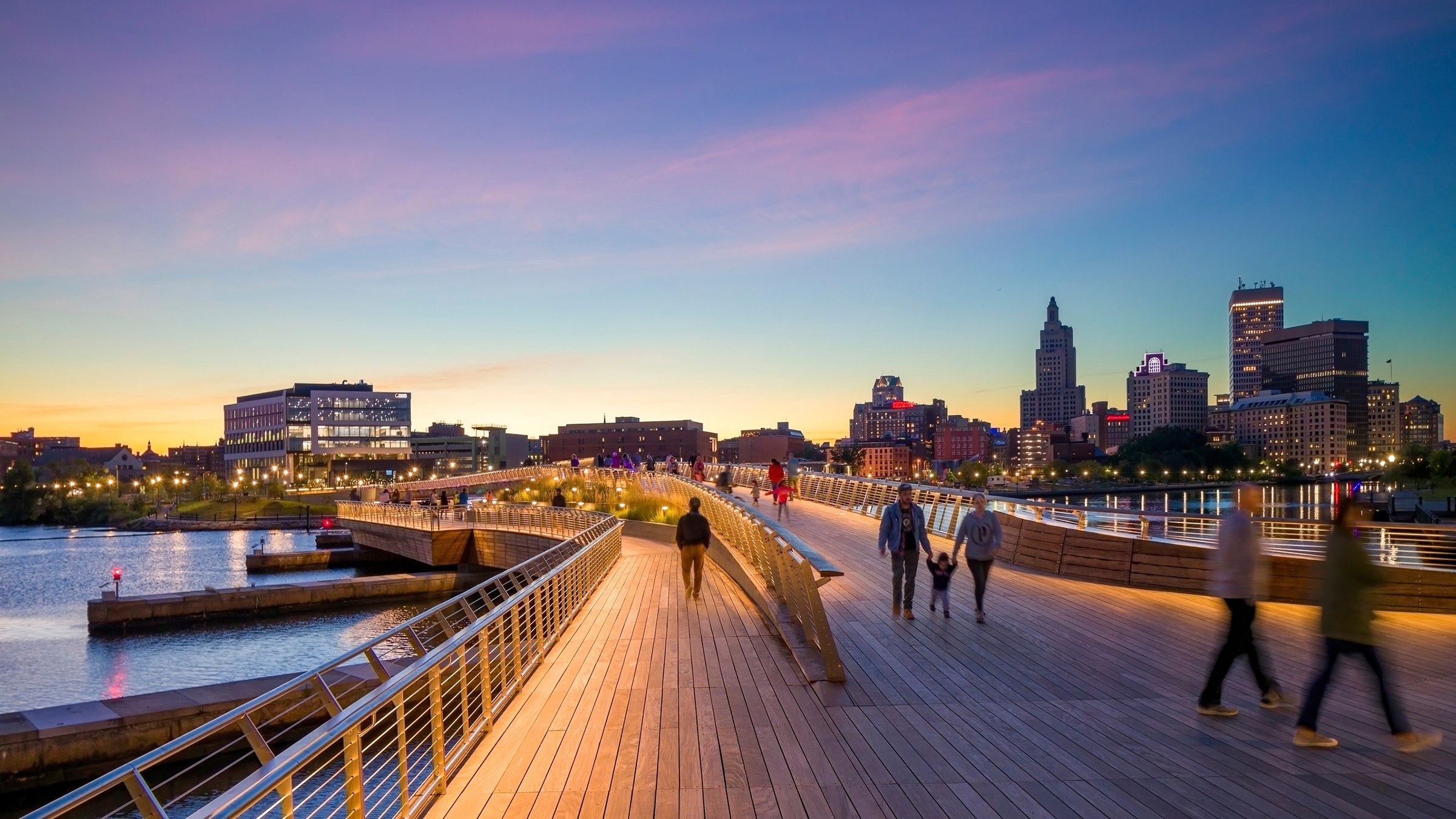
Providence Innovation District
The rerouting of I-195 in Providence unlocked new developable land and removed a longtime barrier between the historic Jewelry District, home of Brown University’s medical school, and the city center. The master plan transforms a brownfield into the vibrant 195 innovation district, envisioning a million-square-foot mixed-use community containing housing, a new hotel, retail spaces, labs, research facilities, and a variety of tech start-up hubs.

Cortex Innovation Community
The Cortex Innovation Community is a dynamic, 200-acre innovation ecosystem, strategically located among prestigious institutions such as Washington University in St. Louis, Saint Louis University, Barnes-Jewish Hospital, University of Missouri — St. Louis, and the Missouri Botanical Garden.
Since the master plan’s completion in 2012, this rapidly expanding district has become home to nearly 400 companies, generating over $1 billion in direct economic input and creating 13,000 new jobs. Cortex is a model for a university-affiliated innovation districts, leveraging a single urban location to cultivate a culture of collaboration and discovery. Each building, lobby, and green space is intentionally designed to encourage spontaneous interactions, idea sharing, and meaningful connections.
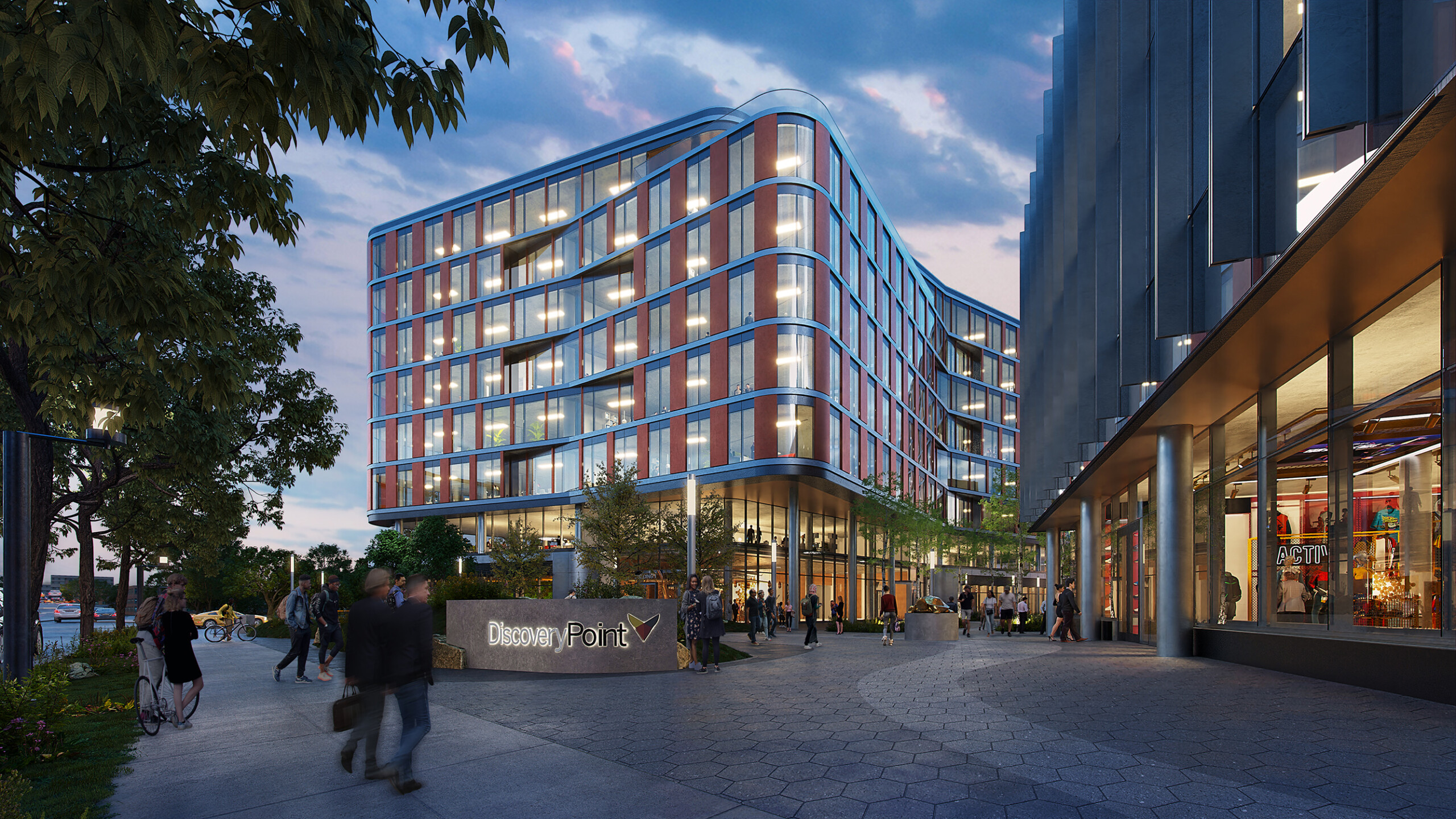
Discovery Point
Since 2015, Ayers Saint Gross has collaborated with the University of Maryland Terrapin Development Company and Brandywine Realty Trust to master plan a vibrant, mixed-use Discovery District at the campus’s front door. Discovery Point, the first phase of this multi-phased innovation project, will capitalize on its proximity to the university’s prestigious research programs and establish a dynamic hub for technology, research, and entrepreneurship.
Strategically positioned between the edge of campus and a research park, Discovery Point has easy access to major interstates and a new Metro station, creating a vital link between the residential and commercial districts of College Park. The district’s programmatic framework will support the university’s three-part mission of research, teaching, and community service, offering a diverse mix of workplaces, dining, retail, housing, and other amenities.

